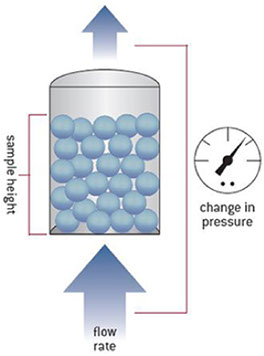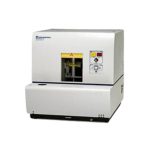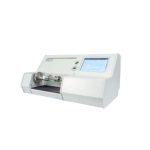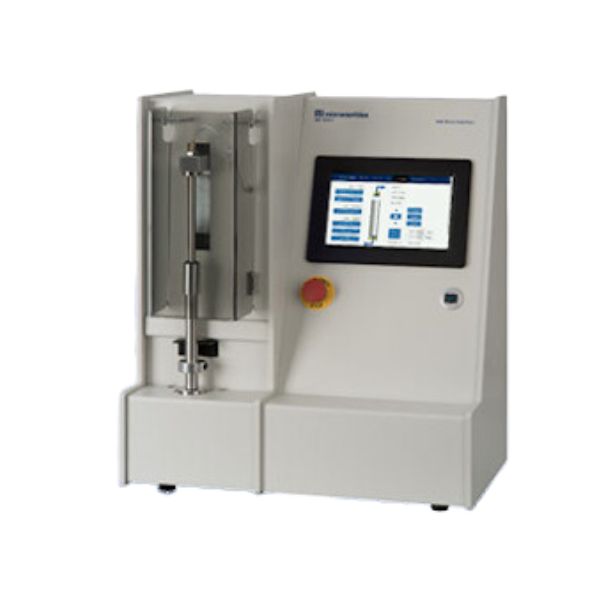General
Micromeritics Subsieve AutoSizer II
The SAS is designed to generate “Fisher number” results highly consistent with that of its predecessor (the Fisher FSSS). This is a crucial point, as the air permeability technique and the FSSS have been used as a benchmark for decades in many industries. Many applications use historical data and quality control standards, and a modern source of comparable, repeatable results is necessary.
Air-permeability Particle Sizing

What is Air-permeability Particle Sizing?
The air-permeability technique is well established for measurement of the Specific Surface Area (SSA) of a sample powder. The SSA measured by this technique has been found to be a useful parameter in various industries such as pharmaceutical, metal coatings, paints, and even geological samples.
The MIC SAS II utilizes dual pressure transducers to measure pressure drop across a packed bed of powder. By varying the sample height and porosity while controlling the flow rate of air through the sample, the SSA and average particle size can be determined using the Kozeny-Carman equation.
Benefits
A Wide Variety of Benefits:
Fully automatic operation increases sample throughput and reduces operator involvement in addition to reducing the opportunity for human error
Real-Time display allows you to monitor the cumulative mass plot of the current analysis and to make immediate procedural changes if needed
Complete particle accountability assures that all of the introduced sample is accounted for, including fractions below 0.1 µm
Multiple analyzer control allows two SediGraph III’s to be operated simultaneously from a single computer, conserving valuable lab space and making data storage convenient
Temperature-controlled analyses assure that liquid properties remain constant throughout the analysis so you can be confident of accurate and reproducible results
Statistical process control (SPC) reports track the performance of your processes allowing immediate response to fluctuations
Capability to merge with that from other particle sizing methods, thus extending the range of reported data to 125,000 µm (125 mm), excellent for geological applications
Data comparison plots provide graphical displays of the mathematical difference between two data sets (difference from reference plot) or the extent of a data point value above or below a tolerance boundary (out of specification plot)
Multiple analysis speeds allow you to choose the desired combination of speed and resolution that meets your needs
Plot overlays provide a visual comparison of analysis results from one or more analyses; a reference or baseline analysis, for example, or a superposition of two different types of plots of the same analysis data
Scanning the sedimentation cell from bottom to top allows accurate inventory of fast-settling particles while minimizing the time required to resolve the separation of fine particles




